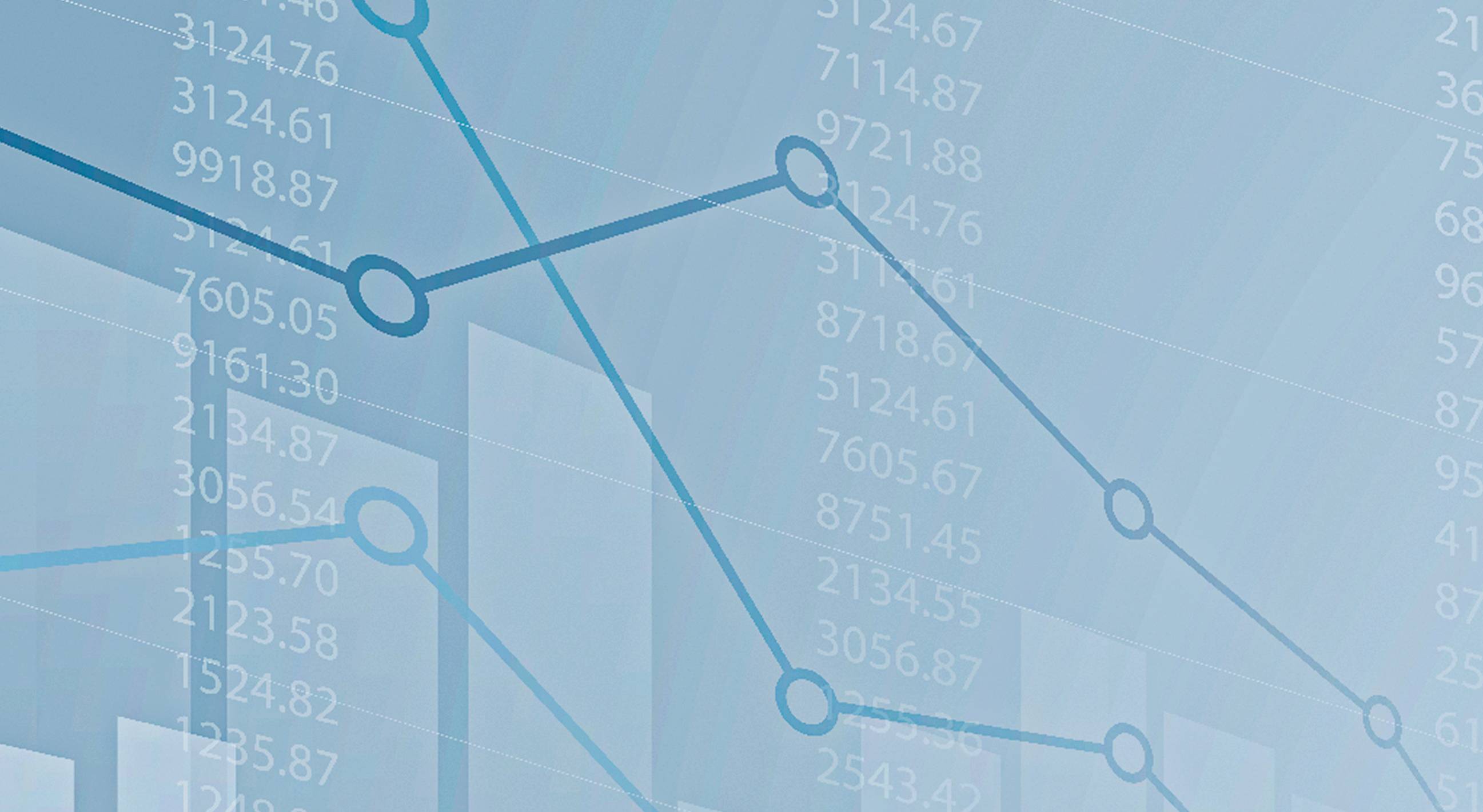
When it is NOT Business as Usual: Reviving the Economy after the Pandemic
Faculty in the McCoy College of Business talk about lessons learned

Dr. William T. Chittenden is the associate dean for graduate programs and associate professor of finance, McCoy College of Business. He is also a Presidential Fellow for 2020-2021. He recently participated in a webinar for Workforce Solutions titled "Recession Proofing Strategies for Businesses."
Q: What can business do to survive?
My basic answer is they need to adapt. Sell your products/services in a different way. For example, gyms now offer online exercise and yoga classes, retailers offer curbside pickup or online ordering when they didn’t before. My favorite example is of an animal sanctuary in Silicon Valley, California. Prior to the pandemic, the operations of the sanctuary were funded by hosting company retreats and allowing the executives to work with the animals. Their pivot was to create Goat-2-Meeting (a great play on GoToMeeting) and have the animals join a company’s Zoom meetings for a fee. It has worked and they are bringing in about 90% of the revenue they did prior to COVID-19.
Use what you have to produce a new in-demand product. For example, GM and Ford switched to producing ventilators; Tito’s Vodka moved to using their alcohol to produce hand sanitizer. Apply the use of your product/service in a different way. For example, Lyft drivers have shifted from carrying passengers to delivering packages for Amazon.
Q: What kind of infrastructure do businesses need to operate in this environment?
Technology is going to be a big part of it. Business is going to have to be more flexible. Stanford estimates that approximately 37% of all jobs could be done remotely. That’s going to have a big impact on going forward for businesses. How much office space do you really need? If 37% can work from home, do 37% want to work from home? If you are looking at competing in a global environment, giving flexibility to your employees is going to be really important. The question itself is really very specific to the business you are looking at. Technology is going to have to be a big part of it. I think most of us have used Zoom more in the last month than we have used it in our entire lifetime — or some other video conferencing software. Folks are finding that a lot of these meetings are just as productive as if we were face to face. It is going to impact on the sales side. Maybe some of those trips across the country don’t need to take place.

Dr. Joni Charles is an associate professor of finance and economics in the McCoy College of Business. Her interests include macroeconomics, environmental economics, and management.
Q: What has business learned that could protect themselves?
After the Great Recession, many businesses had to rethink their flexibility to control costs when consumer demand dropped. Sometimes, this flexibility translated into increasing productivity but achieving this with fewer employees or changing the mix of employees (e.g., hiring more contractors). The same consideration of costs is being made in the midst of this pandemic economy as more employees are being hired to do shift work or to take or deliver online orders, developing websites for a public that expects the same online service from small businesses that they have come to expect from Amazon or Walmart, or being asked to work from home.
Companies, large or small, must now carefully consider the logistics and management costs of their supply chain, since the pandemic has brought to light not only how globally sourced many of our resources are but how flexible our national, regional, or local suppliers need to be. How a business considers the configuration of its physical space may have to change — from the inside of an airplane to the inside of a hair salon.
Consumers will only resume their economic activity when they feel safe to do so, just as passenger traffic on commercial airlines resumed only after passengers felt that their security concerns were being addressed. The debt burden of businesses (indeed sectors of the economy like the oil industry) will need to be examined, [as well as] the relationship they have with their banker(s) and insurance agencies to provide lines of credit or protection when the next unforeseen global threat arises. Finally, businesses will have to examine their revenue-generating models to see if their revenue streams are diversified enough to be sustained in a downturn, given their fixed costs.
The challenge will not just be to get consumer spending to the level it was before the pandemic but understanding how the behavior of consumers may have changed. Meal preparation, entertainment, shopping, transportation choices, home buying and home building, interior and product design, grocery shopping, the sharing economy, and shared work are just a few examples that may reflect changes in consumer tastes and preferences.
Q: What positive things do you predict can come from this economic downturn?
• Recognize the importance of our local economy. The buying public is more aware of the dependence of our local businesses that provide goods and serviceson which we spend our money than it ever has been. Businesses are more appreciative than ever of the generosity of their customers and the value of their customers’ patronage, despite the inconveniences of stay-at-home requirements.
• An appreciation for the importance of interrelated sectors of our economy. For example, the healthcare sector, from medical services, medical equipment, medical institutions, medical personnel, logistics and supply chain management, a strong public health sector (not to forget reliable medical insurance and our long-term care facilities). Other examples we have heard of are the agricultural and dairy industries and schools and restaurants, or the flower and wedding planning industries.
• A realization of our dependence on each other. While some professions are more highly paid than others, perhaps earn more recognition than others, require more education and/or training than others, the projected economic downturn will make us acutely aware that most employees perform their jobs with pride and professionalism and want to earn a living that allows them to earn a wage or salary to provide for themselves or their families.

Dr. Raymond P. Fisk is a professor of marketing and honorary professor of international studies in the McCoy College of Business. He is now focusing his service research on the many side effects of the COVID-19 crisis.
Q: What has business learned from this?
Any employee work that can be done remotely is being done remotely now. This is for the best. For the foreseeable future, only the most essential human-to-human contact will happen. Unfortunately, this will significantly undermine the business models of manyservice industries.
Businesses are learning new sanitation treatments and hygiene inspection processes, which will be for the best. Airplanes, hotels, restaurants, retailers, etc., should have been kept much cleaner before this pandemic, but now these service organizations are being forced to make expensive cleanliness improvements.
Capacity management is a major concern in service organizations that sell experiences because they cannot inventory their supply. For example, this means that each unsold airplane seat on a flight is revenue lost forever. The same applies to restaurants, hotels, etc.
Most of these service organizations prefer to be “sell all” and cannot survive if their capacity utilization drops below 50% to 60%. The physical distancing requirements caused by the COVID-19 crisis may not get them above 40% of capacity. This is where small local businesses with shallow financial reserves are in deep trouble. For service organizations that sell physical goods, they have learned that “just in time” inventory systems are completely inadequate in a crisis. Such service organizations need to manage their inventories to enable resilient supply in case of emergencies.
One of the greatest positives is that tremendous innovation and collaboration is happening in business to survive this crisis.
Q: What can be applied in the classroom?
My key takeaway has been to strengthen my emphasis on helping students understand that they need to become the designers of their lives and have the tools to redesign, as necessary. Our current generation of students will face challenges that no living generation has faced.
They are fortunate that their generation is more tech savvy in using modern communications tools versus any prior generation. They will be challenged to adapt very quickly or fall behind those that do adapt quickly. So I have been focused on helping them build their self-discipline, their creativity, and their resilience.
We are very fortunate that businesses and families can communicate with each other via telephone,email, social media, and videoconferencing. I expect major innovations in the speed and quality of these services. In particular, we might finally see virtual reality systems that are much better than the crude prototypes still being marketed now. ✪